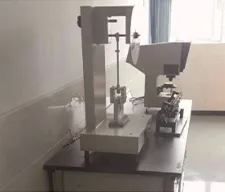flux cored welding wire
Understanding Flux-Cored Welding Wire
Flux-cored welding wire is a popular choice among welders for its versatility and efficiency in a variety of applications. This welding method is particularly favored in industrial settings due to its ability to produce strong, high-quality welds with relatively low equipment costs. The innovation behind flux-cored welding wire has transformed the welding landscape, making it invaluable for both professional welders and hobbyists alike.
What is Flux-Cored Welding Wire?
Flux-cored welding wire is similar to traditional solid wire used in MIG (Metal Inert Gas) welding, but with a significant difference it contains a core filled with flux. This flux serves multiple purposes during the welding process. When heated, it melts and forms a protective shield around the weld pool, which helps to prevent oxidation and contamination from the surrounding atmosphere. This is particularly important in environments where wind or other factors can disrupt the welding process.
The wire is available in two main types gas-shielded and self-shielded. Gas-shielded flux-cored wire requires an external gas supply, typically argon or a mix of gases, to protect the weld. In contrast, self-shielded wire generates its own shielding gas during the welding process and is more suitable for outdoor applications or situations where wind may blow away the shielding gas.
Advantages of Using Flux-Cored Welding Wire
One of the primary benefits of flux-cored welding wire is its ability to provide excellent penetration and weld quality. The flux core allows for deeper weld penetration, which is essential for thicker materials. This makes it an ideal choice for heavy fabrication work, heavy machinery repair, and construction projects.
flux cored welding wire

Another advantage is the versatility of the welding process. Flux-cored welding can be performed in various positions, including flat, horizontal, vertical, and overhead, making it suitable for a wide range of welding needs. Additionally, it is effective on rusty or dirty metals, which can be a significant advantage in repair applications where surface preparation might be difficult.
Flux-cored welding also operates at a faster speed compared to traditional welding methods. The continuous feeding of the wire allows for quicker weld completion, which can increase productivity on a job site. This efficiency is often paired with lower operational costs, as it can require less finishing work due to the quality of the weld.
Applications of Flux-Cored Welding Wire
Flux-cored welding wire is used across various industries, including construction, shipbuilding, automotive repair, and pipeline work. Its ability to work well in outdoor conditions makes it particularly valuable in construction and industrial environments where exposure to elements is inevitable.
Furthermore, as industries lean toward automation, flux-cored welding plays a crucial role in robotic welding applications. Its performance compatibility with automated systems allows for consistent and high-quality welds despite the challenges of complex geometries and varying material thicknesses.
Conclusion
Flux-cored welding wire stands out as a flexible and efficient welding solution that continues to gain popularity across many sectors. Its advantages, such as excellent penetration, versatility in applications, and speed of operation, make it an essential tool in the modern welder's arsenal. As technology advances, the evolution of flux-cored welding wire will undoubtedly enhance its capabilities further, solidifying its place in the future of welding. Whether you are a seasoned welder or a newcomer to the trade, understanding and utilizing flux-cored welding wire can significantly improve your welding projects and outcomes.
-
Best Hardfacing MIG Wire for Sale High Durability Welding SuppliesNewsJun.10,2025
-
ER70S-6 MIG Welding Wire Supplier High Quality China Welding Wire ManufacturerNewsJun.10,2025
-
Premium Aluminum Flux Core Wire China Manufacturer FactoryNewsJun.10,2025
-
Premium Cast Iron Welding Electrodes for Superior BondsNewsJun.10,2025
-
Premium 309L MIG Wire High Strength & Corrosion ResistantNewsJun.10,2025
-
Stainless Steel Welding Rod Types Complete Guide to Corrosion ResistanceNewsJun.09,2025


